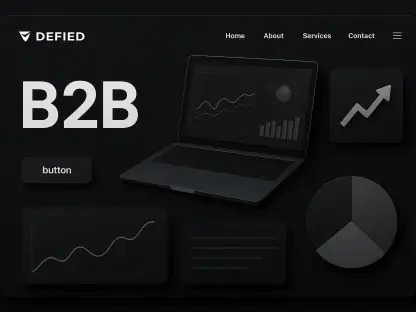In the fast-paced world of digital marketing, imagine a scenario where a mid-sized e-commerce business invests heavily in search engine optimization (SEO), only to find six months later that traffic has barely budged, and sales remain stagnant. What went wrong? The answer often lies in the lack of proper measurement. As of 2025, the SEO landscape has become more complex, with search engine algorithms prioritizing user experience and technical precision over mere keyword stuffing. This industry report dives into the critical role of Key Performance Indicators (KPIs) in navigating these challenges, offering a roadmap for businesses to evaluate and optimize their SEO strategies effectively. By focusing on measurable outcomes, companies can align digital efforts with overarching business goals in an era where data drives decision-making.
Understanding the Importance of KPIs in SEO
The foundation of any successful SEO campaign rests on the ability to measure progress and impact. KPIs serve as vital signposts, providing clarity on whether strategies are yielding desired results or require adjustment. In today’s digital environment, where competition for online visibility is fierce, understanding performance through concrete metrics is non-negotiable. The gradual nature of SEO outcomes—often taking months to manifest—further underscores the need for consistent tracking to ensure resources are not wasted on ineffective tactics.
Moreover, KPIs bridge the gap between technical SEO efforts and tangible business objectives. They enable marketers to demonstrate value to stakeholders by tying website performance to revenue growth or customer acquisition. The principle that what cannot be measured cannot be improved holds true, pushing businesses to adopt a data-driven mindset. Without these indicators, optimizing campaigns becomes a guessing game, risking both time and budget in an industry where precision matters most.
Core Categories of SEO KPIs
Traffic and Exposure Metrics
At the heart of SEO lies the pursuit of visibility, making traffic and exposure metrics indispensable for gauging campaign success. Organic traffic, the volume of visitors arriving via unpaid search results, stands as a primary benchmark, reflecting the effectiveness of ranking improvements. Tools like Google Analytics and Google Search Console offer detailed insights into these numbers, helping identify trends and areas for growth. However, sheer volume alone is insufficient; the relevance of this traffic determines its true worth.
Beyond raw numbers, impressions provide a window into potential reach by showing how often a site appears in search results, even if not clicked. This metric highlights opportunities to refine content or meta descriptions for better click-through rates. Additionally, average positions track ranking progress for targeted keywords, guiding prioritization of optimization efforts. Together, these indicators paint a comprehensive picture of a site’s visibility and its ability to attract the right audience.
User Behavior Metrics
Once visitors land on a website, their actions reveal the effectiveness of content and design, making user behavior metrics a critical category. Dwell time, or the duration spent on a page, signals whether content resonates with users, directly influencing search engine perceptions of quality. A longer dwell time often correlates with higher rankings, as it suggests relevance and engagement.
Conversely, a high bounce rate—where users leave after viewing just one page—can indicate mismatched expectations or usability issues, prompting a review of landing pages or load times. Pages per session, measuring the average number of pages viewed per visit, further assesses engagement, with higher figures pointing to compelling navigation and content depth. Most crucially, the organic conversion rate, tracking actions like purchases or sign-ups from organic traffic, ties SEO directly to business impact, emphasizing its role beyond mere visibility.
Strategic and Competitive SEO Metrics
Keyword Coverage and Competitiveness
In a crowded digital marketplace, understanding keyword performance is essential for carving out a competitive edge. Keyword coverage measures the breadth of terms for which a site ranks prominently, including long-tail keywords that capture niche, intent-driven searches. A diverse keyword portfolio ensures broader reach and attracts high-quality traffic more likely to convert.
Share of Voice offers another lens, comparing a site’s organic traffic to that of competitors to gauge digital market share. This metric helps benchmark positioning within an industry, revealing gaps or strengths in strategy. Meanwhile, keyword difficulty assesses the effort required to rank for specific terms, enabling a balance between quick wins and long-term investments. These indicators collectively inform strategic planning, ensuring efforts are both ambitious and achievable.
Technical Performance Indicators
Behind every successful SEO campaign lies a robust technical foundation, where performance indicators play a pivotal role. Page speed, underscored by Google’s Core Web Vitals, directly affects user satisfaction and rankings, with metrics like Largest Contentful Paint becoming non-negotiable standards. Slow load times can deter visitors, making ongoing optimization a priority for maintaining competitiveness.
Crawl errors, identified through platforms like Google Search Console, expose barriers that prevent search engines from accessing content, potentially derailing visibility efforts. Similarly, index coverage ensures pages are properly cataloged for search results, addressing issues that could exclude valuable content. Continuous monitoring of these technical aspects is vital, as they underpin the effectiveness of all other SEO initiatives, from traffic growth to user engagement.
Financial Metrics for SEO ROI
Linking SEO efforts to financial outcomes remains a key concern for justifying investment in this channel. Organic Customer Acquisition Cost (CAC) calculates the expense of gaining customers through unpaid search, offering a comparison point against paid marketing channels. Lower CAC often highlights the efficiency of organic strategies in building a sustainable audience base.
Organic Customer Lifetime Value (LTV) complements this by estimating the total revenue a customer generates over time via organic channels, often reflecting higher loyalty due to the trust inherent in search-driven discovery. Return on Investment (ROI), though challenging to measure given SEO’s long-term horizon, evaluates profitability by weighing net gains against costs. These financial KPIs are crucial for demonstrating value to decision-makers, ensuring SEO is seen as a strategic asset rather than a mere cost center.
Challenges in Tracking and Interpreting SEO KPIs
Navigating the complexities of SEO measurement presents significant hurdles for even seasoned marketers. Multiple factors influence performance—from algorithm updates to competitor actions—making it difficult to isolate the impact of specific tactics. This complexity often leads to misinterpretation, where surface-level data masks underlying issues or opportunities, necessitating a deeper dive into context.
Another challenge lies in moving beyond vanity metrics, such as raw traffic counts, to focus on meaningful indicators tied to business goals. This shift requires discipline to prioritize quality over quantity, alongside qualitative analysis to uncover the reasons behind trends. Solutions like regular monitoring and actionable dashboards can mitigate these issues, providing clarity and enabling swift adjustments to strategy when needed.
Future Trends in SEO Measurement
As the digital landscape evolves, so too do the approaches to tracking SEO performance, with several emerging trends shaping the horizon. Technical SEO, particularly aspects like page speed and mobile optimization, continues to gain prominence as user expectations for seamless experiences rise. Search engines are increasingly factoring these elements into rankings, pushing businesses to prioritize site performance.
User experience metrics are also becoming central to algorithms, with engagement signals playing a larger role in determining relevance. Additionally, the integration of AI-driven tools offers deeper insights into data patterns, enabling predictive analysis and more personalized strategies. Adapting to these shifts, alongside changing consumer behaviors and search engine updates, will be essential for staying ahead in the measurement game over the coming years, such as from 2025 to 2027.
Closing Reflections
Looking back, this report delved into the multifaceted world of SEO KPIs, uncovering their indispensable role in driving successful campaigns. From traffic and user behavior insights to technical health and financial returns, the analysis highlighted how a balanced, data-driven approach paved the way for meaningful progress. The challenges of measurement, while significant, were shown to be surmountable through consistent monitoring and a focus on relevant metrics.
Moving forward, businesses should commit to integrating diverse KPIs into their strategic frameworks, leveraging tools like dashboards for real-time visibility. Prioritizing quality over sheer numbers, alongside staying attuned to emerging trends like AI analytics and user-centric algorithms, will ensure resilience in a dynamic field. By aligning these metrics with specific business objectives, companies can transform SEO from a tactical effort into a cornerstone of long-term growth.









